
Painting (1986) by Anton van Dalenshowing B.F. Skinner with Project Pigeon.
Project Orcon
During World War II, Project Pigeon (later Project Orcon, for "organic control") was American behaviorist B. F. Skinner's attempt to develop a pigeon-guided missile.
The control system involved a lens at the front of the missile projecting an image of the target to a screen inside, while a pigeon trained (by operant conditioning) to recognize the target pecked at it. As long as the pecks remained in the center of the screen, the missile would fly straight, but pecks off-center would cause the screen to tilt, which would then, via a connection to the missile's flight controls, cause the missile to change course.
Although skeptical of the idea, the National Defense Research Committee nevertheless contributed $25,000 to the research. However, Skinner's plans to use pigeons in Pelican missiles was considered too eccentric and impractical; although he had some success with the training, he could not get his idea taken seriously. The program was canceled on October 8, 1944, because the military believed that "further prosecution of this project would seriously delay others which in the minds of the Division have more immediate promise of combat application."
Project Pigeon was revived by the Navy in 1948 as "Project Orcon" under the guidance of Dr. F.V. Taylor. The project was canceled in 1953 when electronic guidance systems' reliability was proven.
The documentary is in error in thinking that there is one pigeon sighting the target through the three portholes. There were actually three pigeons with their own porthole.
ELECTRONIC DESIGN, November 25, 1959, p. 16
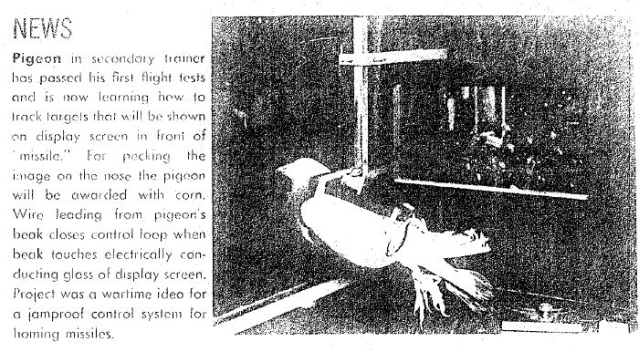
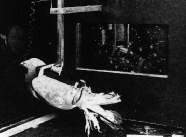
A study of missile guidance by pigeon pecking has been taken out from under wraps by the Navy. At the same time, perhaps to calm fears of guidance designers, the Navy made clear that the project has been discontinued.
Started during World War II, Project Orcon (for organic control) was a try-anything approach to solving some then-current problems. Guidance systems for homing missiles were being easily countermeasured and the Navy thought animals might have potential as a jam-proof control element. Pigeons were selected for trial because they were light, easily obtainable and adaptable. Their job was to ride inside a missile and peck at an image of a target picked up by a lens in the missile's nose. The pigeon's pecking of the target image was translated into an error signal that corrected the simulated missile's simulated flight.
The project was revived in 1948 and carried further. In simulated rocket tests, the pigeons produced "surprisingly good results." The researchers were convinced that a pigeon could successfully guide a speeding missile under optimum conditions, compensating for his own and the missile's errors.
But after three years of equipment development and testing, the project was abandoned because the range of the Orcon system could be no greater than the range of any optical system and the system could be used only in the daytime. The trainer used target images photographed in color by a jet plane, which made picture-taking dives at a destroyer and a freighter in open sea.
Trainee pigeons were started out in the primary trainer pecking at slowly moving targets. They were rewarded with corn for each hit and quickly learned that good pecking meant more food. Eventually pigeons were able to track a target jumping back and forth at five inches per second for 80 seconds, without a break. Peck frequency turned out to be four per second, and more than 80 percent of the pecks were within a quarter inch of the target. The training conditions simulated missile-flight speeds of about 400 miles per hour.
The image was shown under a glass screen coated with stannic oxide to make it electrically conducting. Through circuitry based on the Wheatstone Bridge principle, pecks on the glass were translated into distance right and left and up and down from the center lines.
The target was moved by a small mirror controlled by a servo. The control circuits were such that if the pigeon stopped tracking, the target image would drift rapidly away from the center of the screen. This forced the pigeon to correct not only his own pecking errors, but those introduced by the yawing of the missile. It turned out that 55.3 per cent of the runs made were successful–that is, the pigeons were able to keep the target image on their screens for the duration of more than half their flights.
If pigeon guidance did not get very far in the Navy, it did have one valuable offshoot. The electrically conducting glass was later used in many radar displays. (ELECTRONIC DESIGN, November 25, 1959, p. 16)
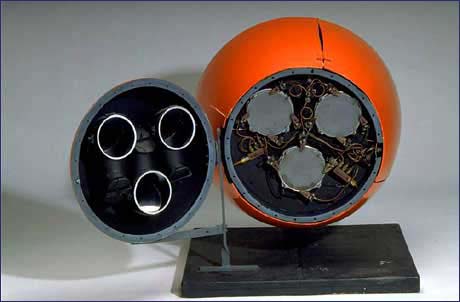
The demonstrator nose-cone now in the National Museum of American History.
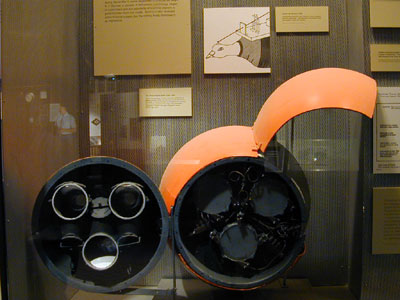
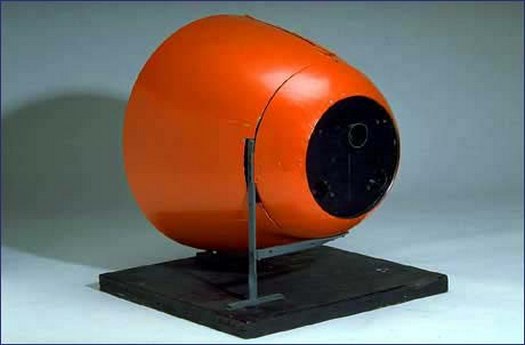

The nose cone was to be used on a glide bomb named PELICAN. (See here for further reference to glide bombs)
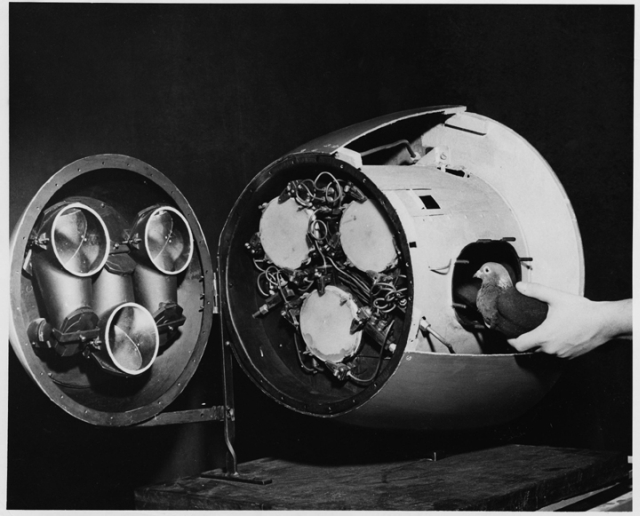
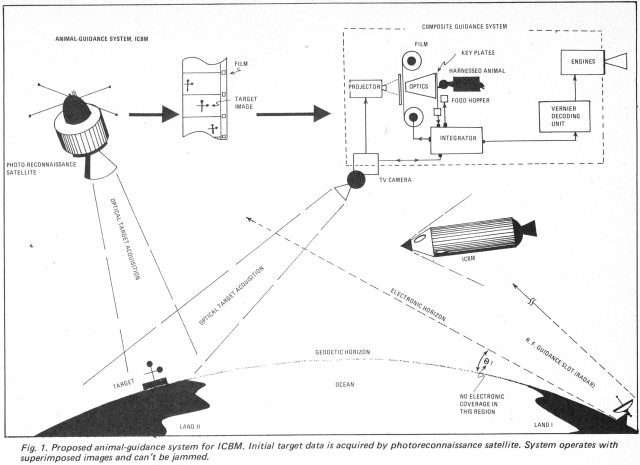
See pdf below on Animal Guidance Systems including ORCON.
Source: Electronics Australia Jan 1972 reprint from Electronics World December 1971.
Source: New Scientist 8 Oct 1959.
Source: Toledo Blade 11 Oct 1959.
Source: Cumulatve Record : Pigeons in a Pelican by B.F. Skinner.
Further images can be found in the above pdf.
Footnote:
From Correspondence from Ronald C. McConnell, Ph.D.
Bell Labs retired, APL-JHU alumnus
mentions "George Carlton's "pigeon-pecking missile guidance project in the late 1940s. George headed the APL robot project 20 years later."
He later hinted to me that is was thought the real reason for the cessation of the project was that administrators could not come to terms with the issues surrounding the fact that pigeons had to die for the cause.

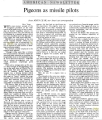
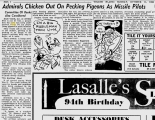

One Reply to “1940 – Project Pigeon (1948 – Project Orcon) – B.F. Skinner (American)”
Comments are closed.